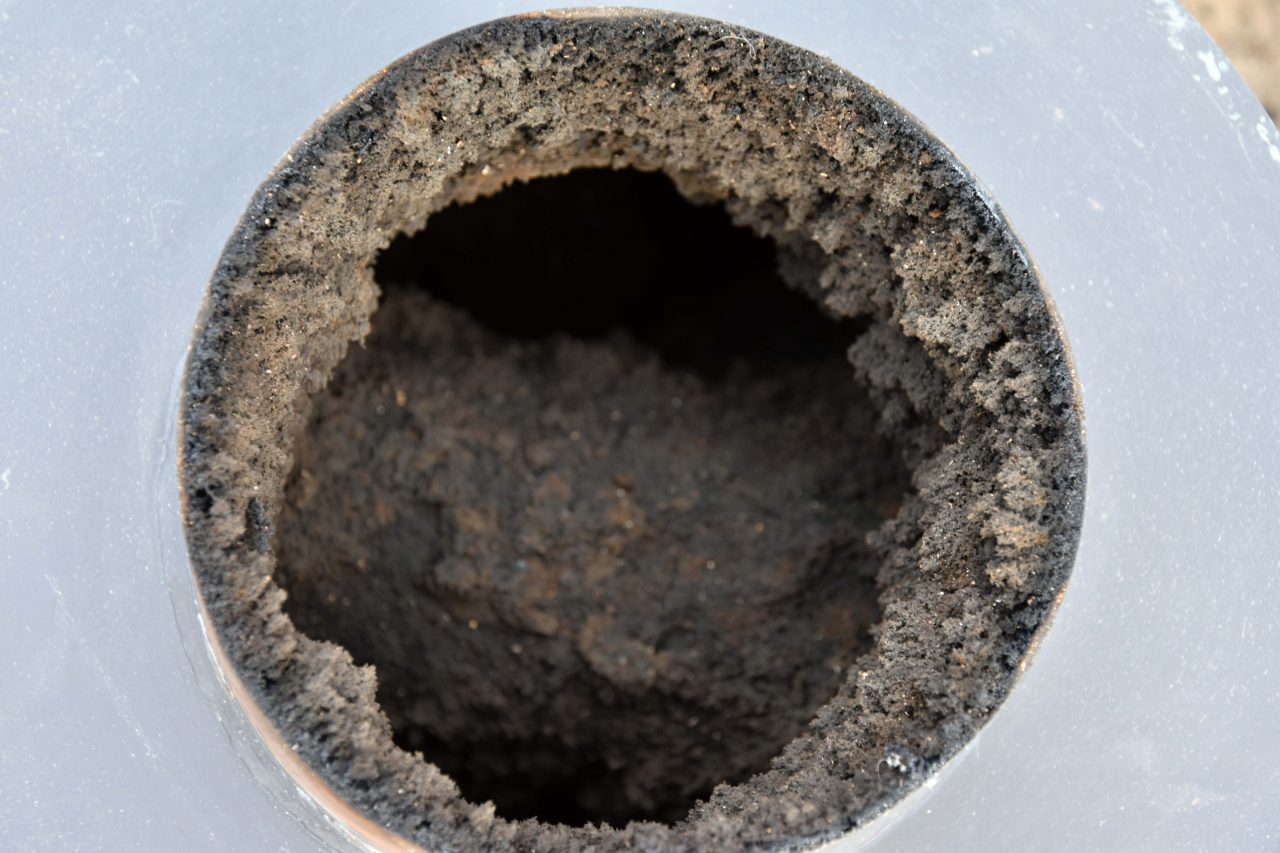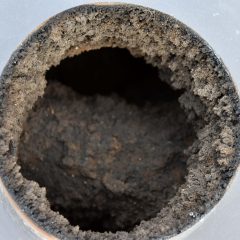
The 3 Stages of Creosote Buildup

Have you noticed that it’s becoming harder and harder for your fire to stay lit? Or maybe you spotted a bit of black soot in and around your fireplace? If so, you’re probably witnessing the formation of creosote.
Creosote is the byproduct of combustion and condensation that forms in a fireplace. It is created of many different particles including smoke, water vapor, minerals, hydrocarbons, and more. When a mixture of those chemicals are released into the chimney, condensation occurs. The residue that is left behind is creosote. Too much creosote buildup can spark a chimney fire. That’s why it’s important to understand how creosote is formed, and how to get rid of it before it gets worse.
What are the 3 Stages of Creosote?
1) First Degree Creosote Buildup. Creosote in its first stage is the easiest to remove from your chimney and contains a high percentage of soot. Typically, a chimney brush is more than enough to remove the soot. This stage occurs when wood combusts and burns well, having plenty of air in order to burn efficiently and warm the chimney flue. This stage is the best condition for your chimney.
2) Second Degree Creosote Buildup. Instead of being composed of mostly soot, the second degree of creosote buildup generally consists of thicker black flakes that contain hardened tar. This type of creosote buildup is harder to scrub away than the first stage. However, it is removable. This type of creosote is produced when incoming airflow is restricted and can form in fireplaces or wood stoves with glass doors installed.
3) Third Degree Creosote Buildup. The third stage of creosote buildup is the worst of them all and very difficult to remove as it is highly concentrated and thick, leaving behind a coating of tar running down the inside of your chimney. The third stage occurs when the flue temperatures are low or combustion is not complete. It is common for this type of buildup to take place when:
- Using unseasoned wood
- The flue is too big
- The house is tight restricting airflow
- The chimney isn’t sufficiently insulated
How to Get Rid of Creosote.
The more creosote builds up, the more difficult it becomes to remove it. In the first stage, creosote can be easily removed and scrubbed off with a flat wire brush. However, once you get into the last stage of creosote buildup, it becomes more difficult to remove. These are a few ways creosote can be removed from your chimney:
- Replacing the chimney liner
- Using a rotary head with chains
- Chemical creosote removers
At Valley Chimney Sweep & Restoration, we use a product called Poultice Creosote Remover from the Chimney Saver line, which is a mixable powder that should only be used by chimney professionals. We mix this into a gel-like substance and apply it to the inside walls of your chimney. In order for the remover to work properly, it must be left on the creosote for 24-48 hours. After a day or two, we return to scrape off the creosote and have your chimney looking and working as good as new.
For well over 40 years, we have focused on making residential and commercial chimneys safer to use. You can rely on our talented and trusted team of chimney sweep professionals to safely remove the creosote from your chimney, no matter what stage it’s in. Contact us today to schedule your creosote cleaning or chimney inspection!
Back To Blog

